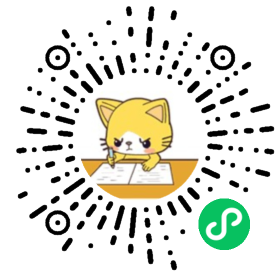【单选题】
血液生成的最基本物质是___
A. 水谷精微
B. 津液
C. 精
D. 营气
E. 宗气
查看试卷,进入试卷练习

微信扫一扫,开始刷题

答案
A
解析
暂无解析
相关试题
【单选题】
Q1: What does the man suggest that the woman do this weekend?___
A. Read J .K .Rowling's first book .
B. Go to buy a new Harry Potter book .
C. Watch BBC news about J .K .Rowling .
D. Take her cousin to see a new Harry Potter movie .
【单选题】
Q2: Where did J. K. Rowling come up with the idea for Harry Potter?___
A. At a cafe .
B. On a train .
C. At a cinema .
D. In a bookstore .
【单选题】
Q3: What are J. K. Rowling’s future plans?___
A. She won't write any more books .
B. She will write more magic stories .
C. She hasn't said anything about her future plans .
D. She said she would work on more serious subjects .
【单选题】
Q4: What are the two speakers mainly talking about?___
A. J.K. Rowling's secret .
B. J .K .Rowling's writing plan .
C. A new book by J .K.Rowling.
D. An interview with J .K .Rowling .
【单选题】
Q1: What happened when Stephen tried to remove a bottle of milk from the refrigerator?___
A. He broke the milk bottle .
B. He fell down on the floor .
C. He made a mess inside the refrigerator .
D. He spilled the milk over the kitchen floor .
【单选题】
Q2: What did Stephen’s mother do when she came into the kitchen?___
A. She gave him a long lecture .
B. She shouted at him in anger .
C. She enjoyed the wonderful mess .
D. She cleaned up the mess with him .
【单选题】
Q3: What did Stephen’s mother teach him later?___
A. How to do an experiment .
B. How to carry a milk bottle .
C. How to clean up spilled milk .
D. How to avoid making mistakes .
【单选题】
Q4: What did Stephen learn from this experience?___
A. Mistakes can become learning opportunities .
B. Mistakes are just like scientific experiments .
C. One should sometimes make mistakes .
D. One should try to avoid making mistakes .
【单选题】
Q1: Why is surfing the man’s favorite activity?___
A. Because he likes the sunny weather.
B. Because he wants to challenge himself .
C. Because it can help solve his sleeping problem .
D. Because it can help him forget all his troubles .
【单选题】
Q2: What is the woman going to do this weekend?___
A. To go sailing .
B. To go surfing .
C. To go to the beach .
D. To go to her nephew's .
【单选题】
Q3: What does the woman love doing?___
A. Going to visit relatives.
B. Enjoying the warm sun on the beach .
C. Building sand castles with her niece and nephew .
D. Playing in the sand and jumping in the waves .
【单选题】
Q4: What does the man remember doing with his brothers?___
A. Surfing in the sea .
B. Collecting seashells .
C. Building sand castles .
D. Jumping in the waves .
【单选题】
Q1: According to the survey, what percentage of British adults watched TV in theirfree time?___
A. 89 percent .
B. 84 percent .
C. 76 percent .
D. 71 percent .
【单选题】
Q2: Which age group would be the most likely to visit their friends and relatives?___
A. People aged 16 to 24
B. People aged 25 to 34 .
C. People aged 16 and over .
D. People aged 55 and over .
【单选题】
Q3: What does the speaker say about listening to music as a leisure activity for British people?___
A. People aged 16 to 24 preferred listening to music most .
B. It was getting more and more popular among the British people .
C. It was the third most popular activity among people aged 55 and over .
D. People aged 25 to 34 listened to music more often than those aged 16 to 24 .
【单选题】
Q4: According to the survey, how are leisure activities related to age?___
A. Older people go out to pubs more often . frequently .
B. Younger people go to the cinema less frequently.
C. Older people spend more time reading and gardening .
D. Younger people spend less time visiting friends and family .
【单选题】
Q1: Why was the girl excited?___
A. She is going to have a lot of vanilla ice cream .
B. She won the spelling competition at her school .
C. She is going to the state capital for a competition .
D. She "excellence"correctly,but others didn't .
【单选题】
Q2: What happened when the man was 13 years old?___
A. His family moved to Sacramento to settle down .
B. His family bought him a new suit and a new tie .
C. He went to Sacramento for a spelling competition .
D. He won the first prize in the state spelling competition .
【单选题】
Q3: Why did the man’s mom give him a big hug?___
A. To make him feel better after he lost the first prize .
B. To apologize for not buying him some ice cream .
C. To wish him good luck in the next competition .
D. To congratulate him on winning the first prize .
推荐试题
【单选题】
采用无底柱分段崩落法回采,上下两个分段同时回采时,上分段应超前于下分段,超前距离应使上分段位于下分段回采工作面错动范围之外且不小于___ m。
A. 10
B. 15
C. 20

